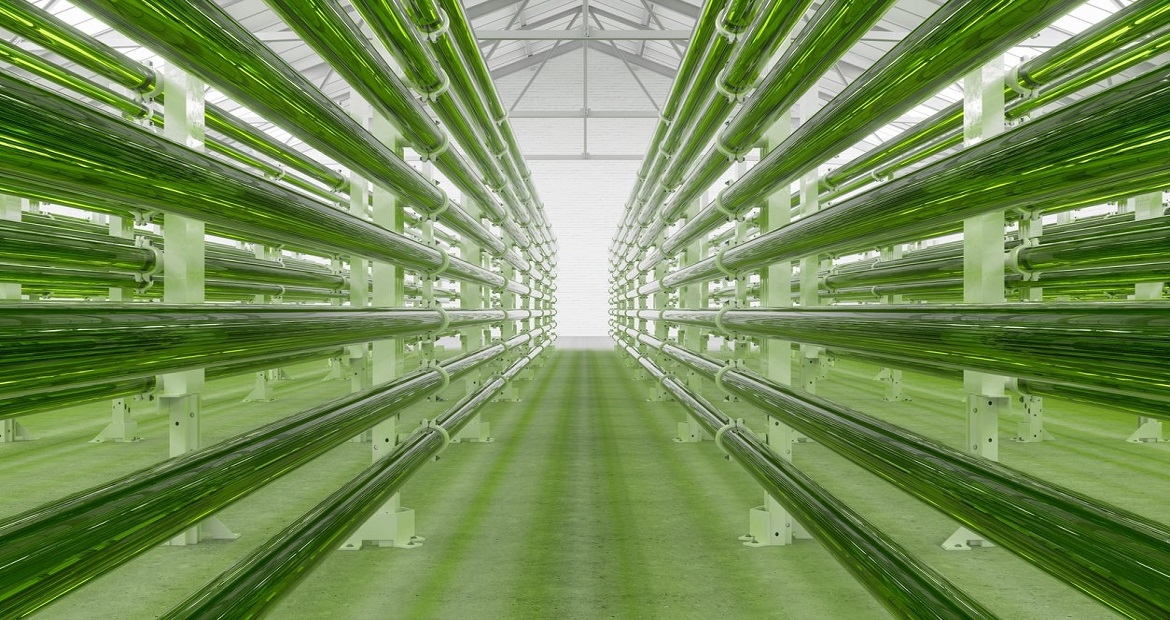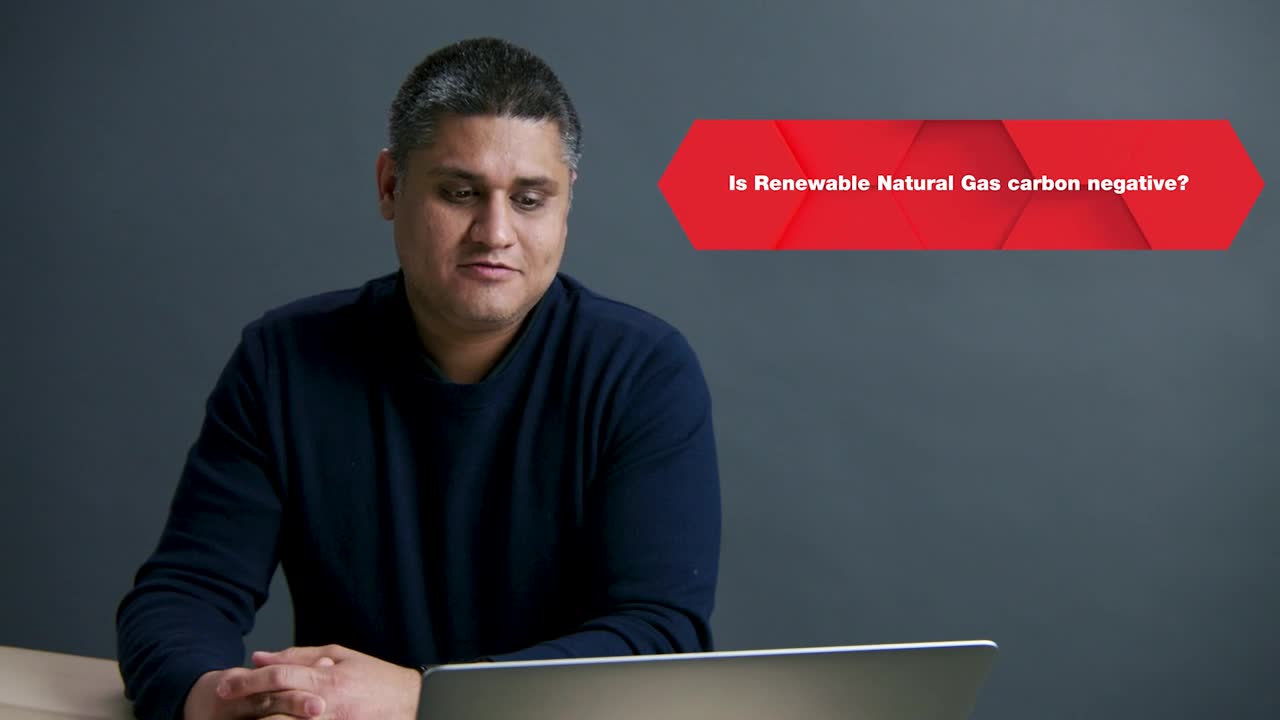Clean Energy: Exploring Benefits, Sources, and Fuels
By Cummins Inc., Global Power Technology Leader

As the world seeks sustainable alternatives to traditional energy sources, understanding the concepts of clean and renewable energy is crucial. Let us discover the benefits of clean energy sources like solar or wind. We will also take a look at the top clean energy fuels such as hydrogen and RNG, and Cummins Inc.’s commitment to driving innovation in the clean energy space.
What is the difference between clean and renewable energy?
Clean energy is a type of energy that can be produced without causing greenhouse gas (GHG) emissions. Renewable energy comes from inexhaustible resources that naturally replenish themselves. For example, nuclear energy may qualify as clean energy. It does not emit GHG, but it is not renewable because it relies on the fission of Uranium, which is a finite resource. Biomass energy, on the other hand, is a renewable energy because it can be made from crops and trees which can be grown as needed. Biofuels are considered cleaner than fossil fuels, even though their combustion releases GHG and other pollutants. This is because the same amount of CO2 captured during photosynthesis is released when combusted.
Benefits of clean energy and the top clean energy sources
Various renewable resources can provide clean energy. Depending on where you are, certain resources may be more abundant, and making clean energy from these resources may be cost-effective. Warm and dry climates where open land is abundant are ideal for solar energy. The U.S. Southwest, for example, has some of the best solar irradiances in the world. As a result, it is experiencing rapid solar development. Countries, such as Denmark and the Netherlands, may not have the same sunny weather. However, they have access to the sea, where large offshore wind farms have been built to harness the power of the wind. A single 15-Megawatt offshore wind turbine can produce enough energy to power a small town. Other top clean energy sources include nuclear, hydropower and geothermal energy.
What are the top clean energy fuels?
Hydrogen energy will play a key role in the future energy landscape. Hydrogen can be produced in a renewable way by electrolysis of water using renewable energy. Hydrogen possesses high energy density, making it a viable alternative to fossil fuels for combustion. Just like natural gas, we can transport hydrogen through pipelines over long distances. By converting it into liquid ammonia, we can also ship hydrogen overseas using tanker vessels. However, there are challenges to establishing a hydrogen economy. These include reducing the cost of hydrogen production and expanding the storage and distribution infrastructure.
Cummins is a world leader in the manufacture of hydrogen fuel cells and hydrogen internal combustion engines. The Hydrogen variant of the popular B6.7 is powerful, reliable, and can be used with existing powertrain architectures. Cummins is also developing larger, high displacement hydrogen internal combustion engines for the heavy-duty truck market, like the X15H.
Renewable natural gas (RNG) is another fuel which can be low-carbon or carbon-neutral. It is produced from organic waste such as manure, food waste or sewage. RNG can serve as a drop-in replacement for natural gas in numerous applications. These include motor vehicles, domestic heating, and industrial processes.

How do clean energy sources compare to diesel for GHG emissions?
Diesel is the number one fuel used in trucks and in other heavy-duty vehicles. In those applications, lowering GHG emissions means finding low-carbon alternatives to diesel. There is no single alternative technology that is ideal across the board. Instead, a variety of solutions have emerged. These allow businesses and consumers to select the one that is best suited to their needs and circumstances.
Diesel-like biofuels, such as biodiesel, can help businesses reduce net CO₂ and other polluting emissions without upfront investments. Biodiesel is made by esterifying fats, such as vegetable oil or used cooking oil, and is commonly blended with diesel. B20, a common blend with 20% biodiesel, balances cost and emissions and can be used in most engines without modifications.
Renewable diesel, also known as hydrotreated vegetable oil (HVO), is another option. Renewable diesel is usually interchangeable with regular diesel but can result in 60% to 85% lower GHG emissions, depending on the production method.
Companies whose vehicles operate mostly within city limits, such as garbage collection companies and delivery companies, can reduce their GHG emission by up to 13-18% when they switch to natural gas vehicles. When these vehicles run on RNG instead of compressed natural gas (CNG), emissions can even be carbon neutral or negative. Natural gas is often cheaper than diesel, switching to natural gas vehicles can also lead to significant savings over time.
Other solutions exist, such as hydrogen. When used in internal combustion engines, hydrogen can reduce emissions by +99% compared to diesel.
A popular alternative fuel among data centers is hydrotreated vegetable oil (HVO). It comes from the same feedstocks used in biodiesel's production. HVO's well-to-wheels emissions can be about 70% lower than those of diesel.
Cummins is committed to providing clean energy solutions to all customers, whatever their specific needs are. An example is the new fuel-agnostic platform which helps fleets decarbonize today with low-carbon fuels.
New innovations in clean energy technology
Cummins is committed to its strategy of driving innovation and sustainability to go further, faster and to improve air quality. In the area of clean energy, we are driving numerous initiatives that will shape the future.
Cummins and Komatsu are collaborating to develop zero-emission mining haul trucks that use fuel cell technology to power some of the largest heavy-duty equipment available on the market. Zero-emission vehicles are ideal for the mining industry. They improve air quality for workers and reduce the carbon footprint of the operation.
Scheduled for release in 2024, the X15N can achieve carbon neutrality when fueled by renewable natural gas. It will be offered with peak ratings of 500 hp and 1850 lb-ft of torque. This natural gas engine will utilize the latest fuel delivery systems developed by Cummins Clean Fuel Technologies (CCFT), a joint venture between Cummins Inc. and Rush Enterprises. These integrated systems will provide greater value to fleets and accelerate the adoption of lower carbon fuels. The X15N will be offered by PACCAR and Cummins in new Kenworth and Peterbilt trucks.
Continuing to look at fuels, Cummins partnered with Microsoft Corp. at their Des Moines, Iowa and Phoenix, Arizona data center sites to power QSK95 generator sets on HVO fuel. Cummins' entire line of diesel generator sets is approved for use with paraffinic fuels (EN15940), when used in standby applications. This includes hydrotreated vegetable oil (HVO).
In addition, hydrogen internal combustion engines (ICE) have the capacity to fulfill the requirements of even the most demanding applications in agriculture and construction. Versatile, for example, has already taken the lead in planning to integrate the Cummins 15-liter hydrogen engine into their tractors. Cummins is set to introduce two hydrogen internal combustion engines, available in 6.7 and 15 liter variants.
Author Profiles

Cummins Inc., Global Power Technology Leader
Cummins Inc., a global power solutions leader, comprises five business segments - Components, Engine, Distribution, Power Systems, and Accelera by Cummins - supported by its global manufacturing and extensive service and support network, skilled workforce and vast technological expertise. Cummins is committed to its Destination Zero strategy - the company's commitment to sustainability and helping its customers successfully navigate the energy transition with its broad portfolio of products. Cummins has approximately 69,900 employees and earned $3.9 billion on sales of $34.1 billion in 2024. See how Cummins is leading the world toward a future of smarter, cleaner power at www.cummins.com.
Related Tags